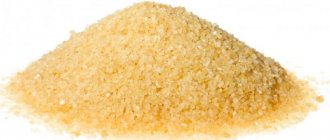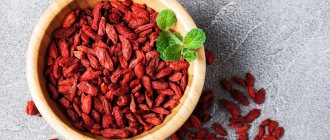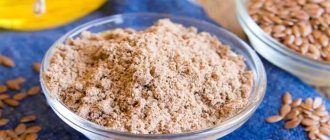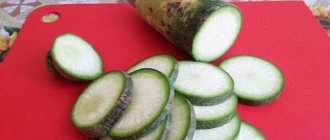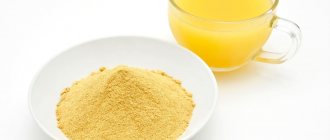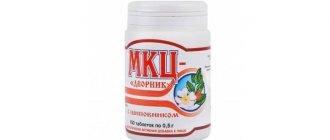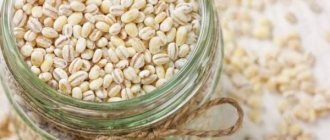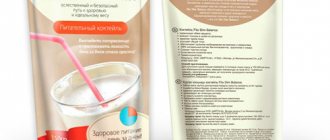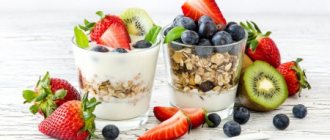Dietary fiber: where is it found?
So, what is dietary fiber or fiber? These are substances that are not digested in the human body, but ensure the growth and stable functioning of the internal intestinal microflora.
This is nature’s best invention for everyone who cares about their health, wants to maintain stable functioning of the gastrointestinal tract and have a beautiful figure. This is why you should add fiber-rich foods to your daily diet.
Where is fiber found? We invite you to look at the table with fiber-rich foods:
As you can see, the most fiber is found in:
- legumes
- cereals
- nuts
The fiber content in vegetables, berries and fruits is significantly lower - mainly due to the fact that most of their volume is water. But on the other hand, you can eat much more fruits and vegetables than cereals - due to the same water, they are lower in calories.
Dietary fiber: fiber and pectins
Fiber is a carbohydrate and is a high molecular weight polysaccharide. Fiber is the main component of plant cell membranes and therefore is widespread in nature (it is found in the greatest quantities in the tissue of higher plants, but there is fiber in lower plants and even microorganisms).
Fiber is also called dietary fiber or ballast substances. There are insoluble dietary fibers, which include cellulose, hemicellulose, lignin, and water-soluble dietary fibers, among which pectins are of particular importance. Sources of dietary fiber for the human body are vegetables, fruits, legumes, cereals, and seeds. The so-called grain fiber is found in the greatest quantities in the outer shells of grains and, unfortunately, these shells are usually removed during cleaning. To obtain valuable dietary fiber in the required quantity, it is recommended to use brown rice and include whole grain products and bran bread in the diet. Insoluble fiber in its pure form is a white substance with a fibrous structure; has neither taste nor smell; it is insoluble in water, as well as in dilute acids and alkalis.
Pectins - soluble fiber substances - are found mainly in fruits, but they are also found in legumes and grains such as oats and barley. Both soluble and insoluble fiber are equally important for the human body. Some foods contain predominantly soluble fiber (for example, oatmeal, legumes, brown bread), while other foods are sources of predominantly insoluble fiber - brown rice, bran. Some foods contain both soluble and insoluble fiber (in varying proportions). Among such products are bread made from wholemeal flour, wheat bran, and dried fruits. One of the most valuable products containing both types of fiber is the apple - the apple peel contains a lot of cellulose, and the pulp contains large quantities of pectin.
The enzymes contained in human digestive juices are not capable of digesting fiber. Only the enzyme cellulase, produced by some microorganisms and lower plants, breaks down fiber into cellobiose. In the human large intestine, insoluble dietary fiber can be digested very little during the activity of microorganisms.
Fiber is of great importance for the normal functioning of the digestive system and for human health in general. Let's take a closer look at the main points that determine its usefulness for the body:
- food containing a lot of fiber requires thorough mechanical processing - chewing; and we know that with thorough chewing, food is better mixed with saliva (the following circumstance is also important: if a person chews food for a long time, more saliva has time to be released), and this means that salivary enzymes have time to break down more starch in the oral cavity;
- fiber, occupying a significant volume in the gastrointestinal tract, effectively reduces the energy content of food, which is very important for people trying to avoid obesity; the fiber present in the stomach gives a feeling of fullness, which is also important for people who tend to be overweight;
- fiber can affect the functioning of digestive enzymes; with an increase in the amount of products containing pectin in the diet, the activity of amylase and chymotrypsin (part of the trypsin complex, an enzyme of pancreatic juice) decreases; an increased amount of cellulose in the intestinal contents reduces the activity of the lipase enzyme;
- coarse fiber fibers, passing through the digestive tract, mechanically irritate the walls of the stomach and intestines; this contributes not only to a more active secretion of digestive juices and mucus, but also to increased peristalsis; as a result of more active peristaltic contractions, food masses move faster and easier through the digestive tract, do not stagnate, and do not rot in the large intestine;
- fiber, which irritates the intestinal walls, has a beneficial effect on the absorption of nutrients. Insoluble dietary fiber is known to influence fat absorption;
- by irritating the intestinal walls and thereby causing the release of additional amounts of intestinal juice, fiber contributes to greater dilution of food gruel and thereby prevents the formation of constipation and ensures bowel regularity;
- The presence of fiber in the large intestine is also important because for the bacteria that inhabit it and perform a number of functions useful to humans (symbiosis), fiber serves as food. Cellulose is not digestible by humans, but it is partially digested by the microflora present in the intestines; if the food consumed by a person contains a lot of fibrous substances, beneficial bacteria living in an acidic environment multiply well and serve the person; if there are few fibrous substances in human food, the number of bacteria in the intestines that produce endotoxin increases, and this negatively affects both the condition of the intestines and the condition of the whole organism;
- fiber has the ability to bind cholesterol in the gastrointestinal tract (the gel-forming properties of pectin are known; pectin envelops cholesterol and bile acids, acquires a jelly-like state and prevents their absorption); Together with fiber, harmful cholesterol is removed from the body; therefore, eating foods that are sources of fiber can be considered as a prevention of diseases, the development of which is based on an excess of cholesterol in the body - hypertension, cardiovascular diseases, cholelithiasis and others; fiber also prevents the absorption of bile acids in the intestine;
- Due to its valuable properties, fiber quite effectively protects a person from cancer of the digestive system - in particular, colon cancer. Studies have shown that fiber prevents the formation of carcinogens (substances that contribute to the development of cancer) in the gastrointestinal tract. Another circumstance also seems important: the more fiber contained in food gruel, the faster this gruel is digested and the faster it moves through the intestines, which means the residence time of carcinogenic substances in the intestines is significantly reduced;
- If a person's food contains sufficient fiber (particularly soluble dietary fiber), then that person's insulin requirement is reduced by more than 25%. Because soluble fiber lowers glycemia, people with diabetes should include more fiber-containing foods in their diet.
However, despite all the listed positive qualities of fiber, it is not recommended to get too carried away with products that are its sources for the body. Excessive consumption of fiber provokes a deficiency of important minerals (calcium, iron, copper, magnesium, zinc), and can cause intestinal upset. This can occur if you overindulge in one source of fiber, such as bran. In cases where there are several sources of dietary fiber, the likelihood of developing any complications is less, even if the total amount of fiber exceeds the norm. A person needs 18-50 g of fiber per day.
Types of fiber
What types of fiber are there? What is the healthiest fiber?
Let's talk. So, there is soluble and insoluble fiber:
1. soluble - this is the contents of plant cells, that is, the “body”; soluble fiber can be found in oat bran, flaxseeds, legumes, carrots, beets, apples. In soluble fiber, in turn, the following types can be distinguished:
- apple fiber
- beet fiber
- orange fiber
- hemp fiber
- inulin
- resins
2. insoluble : This is the membrane of the cell walls, which is the skeleton of plants. This type of fiber can be found in whole grain cereals, legumes, vegetables, seeds and nuts. Here we can distinguish such subspecies as:
- cellulose
- lignin
- hemicellulose
- polydextrose
- isomaltooligosaccharide
Soluble fiber acts as a sorbent, cleansing the body of all toxins and harmful substances. Insoluble is a kind of “engine” that stimulates proper intestinal function and protects against constipation.
Fiber can enter our body along with vegetables, fruits, herbs, nuts, but dietary fiber can also be sold in finished form - you have probably come across this type of fiber in pharmacies or specialized stores that sell products for weight loss and a healthy lifestyle. Which one is healthier? Both natural and prepared fiber have beneficial properties for the body. By the way, pharmaceutical or “ready-made” fiber is quite often enriched with additional components, among which there are vitamins and minerals that contribute to the health of the body.
How to take fiber for weight loss?
Eating excess fiber is not always beneficial, so knowing how to use it in your diet for weight loss is essential.
For maximum effect, fiber is taken as follows. The general rules for any type of fiber are:
- You need to start with a minimal portion in order to observe the body’s reaction to the increased presence of plant elements.
- It is consumed in most cases before or during meals, washed down with plenty of liquid (water, juices, tea).
- In addition to the “dry” intake, you can add fiber to ready-made dishes. On average, 1–2 tsp per serving. In other words, during the active process of losing weight, you need to eat 4–6 teaspoons of plant fiber per day.
- Initially, take half a teaspoon 30 minutes before meals. After 10 days, increase the dose and drink a whole spoon. In this way, you need to increase your fiber intake to 3 tsp. On average, it takes one and a half months to achieve the goal of 3 tsp.
- After 2 months of taking plant fiber, you need to take a 1-3 month break.
- Doctors recommend that when carrying out a complex of fiber intake, you should also “arm yourself” with multivitamins.
Please note that the doses and amount of fiber that you need to eat for weight loss are written on the packaging of each specific herbal supplement, so read and maintain the required proportion.
The benefits and harms of fiber
Let's talk about what fiber is needed for, that is, about its beneficial properties, and we'll talk about the important properties of each type of fiber:
1. Soluble fiber
- fiber for the intestines: ensures the correct functioning of the gastrointestinal tract; fiber for weight loss: helps reduce fat deposits
- fiber to strengthen blood vessels: strengthens the cardiovascular system, prevents the development of atherosclerosis, lowers cholesterol levels
- fiber for cleansing: like a sponge, absorbs all harmful substances and toxins, subsequently removing them from the body
- Soluble fiber also helps lower blood glucose and cholesterol levels
2. Insoluble fiber
- in the gastrointestinal tract: normalizes intestinal activity, helping to prevent constipation, improves the process of defecation
- significantly reduces the risk of developing diabetes
- reduces the risk of development and formation of diverticula: a diverticulum is a bulging formation that can appear in weakened areas of the intestinal wall. Taking insoluble fiber is a good prevention of this disease.
Also, the valuable properties of both types of fiber include:
- ensuring satiety for a long time
- loss of appetite
- general health of the body
According to the recommendations of the World Health Organization, regular consumption of fiber can significantly improve health and prevent the development of many diseases. How to take it?
How to choose the right fiber for weight loss?
As for choosing the type of fiber, you need to base it on your needs and the desired result. As noted above, fiber can be of two types, and accordingly its actions differ.
- Soluble swells in water, and after consumption absorbs bile acids, which prevents them from entering the blood. In the stomach, the eaten substance turns into jelly, filling its cavity, which does not allow eating a lot of food.
- Insoluble, it acts as a laxative, causing the intestines to empty quickly. This helps remove cholesterol from the body. By consuming insoluble fiber, you can forget about constipation and also reduce the risk of developing gallstones.
Knowing about the properties of fiber, you can easily choose the one that will help you lose weight.
